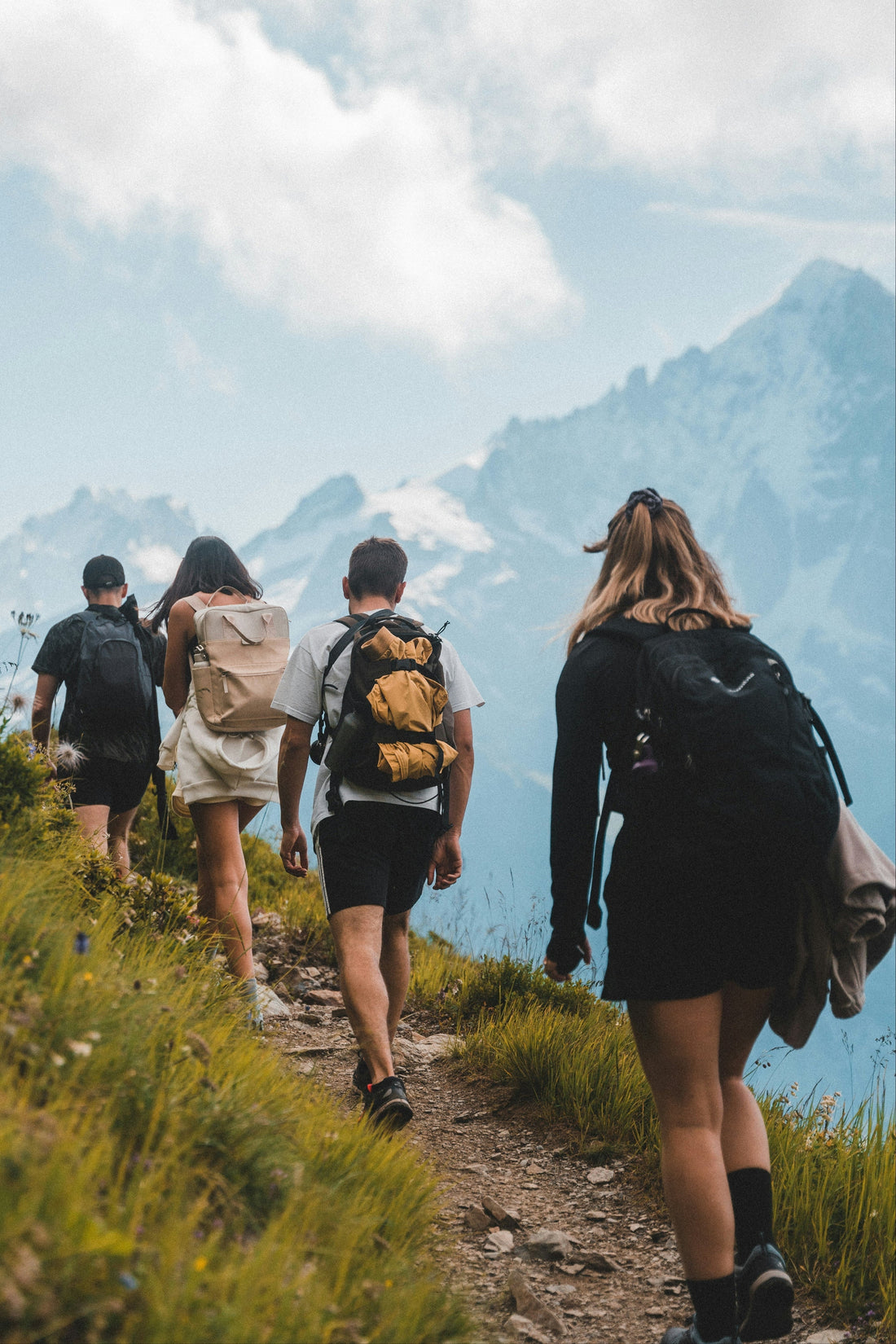
Stop Blisters on Hikes: Podiatrist Tips & Protective Gear Guide
Share
How to Stop Blisters From Ruining Your Hikes 🥾👣
Introduction
Few things ruin a hike faster than blisters. That hot spot, the rubbing, the pain … by the evening your feet can feel raw. But blisters don’t have to be the inevitable cost of getting outdoors. As a board-certified podiatrist, I’ve seen what works — with gear, socks, inserts and habits. With a little prevention and the right protective tools, you can avoid them altogether (or at least minimize the damage).
Why Blisters Happen on the Trail
From podiatry sources and hiking experts, here are the main culprits:
-
Friction + Pressure: Repeated rubbing where the boot or sock moves against skin causes the layers to shear. If that area is under pressure, the risk increases.
-
Moisture & Heat: Sweat, rain, or wet terrain softens the skin, making it weaker. Moist skin + friction = blister factory.
-
Poor Fit or New Footwear: Boots that are too tight, too loose, or not broken in can cause hotspots. Wrong shape or seam position also matter.
- Inadequate Socks or Layers: Cotton holds moisture; thin socks may shift and rub; seams can irritate. Double layers or moisture-wicking socks often do better.
What You Can Do Before the Hike
- Break in New Hiking Boots & Shoes slowly, wearing them with your hiking socks & inserts, walking short distances first.
- Choose proper socks: synthetic, moisture-wicking, no irritating seams. Bring extra pairs & change when wet.
- Keep feet dry: Use foot powder, air feet out during rest stops, avoid stepping into wet areas if possible.
- Inspect your feet beforehand: find hot spots (areas that feel warm or red), rough skin, toenail problems.
- Dress intelligently: lacing techniques can lock heel in, reduce slipping which causes friction / rubbing.
Essential Gear & Protective Tools
Here are 11 great protective items from PodiatryMarket.com to help stop blisters before they start — or protect against them if you feel a hot spot forming:
- Moleskin Padding (2-count) – adheres to problem spots to reduce friction.
- Hammer Toe Protector – protects the sides of toes that rub against boot seam.
- Non-Sterile Gauze Pads (2×2-inches, pack of 100) – for emergency cushioning or covering raw areas.
- Back-of-Heel Cushions (multi-color) – to shield Achilles / heel back of boot rubbing.
- Gel Back-of-Heel Cushions (clear) – softer cushioning gel for more sensitive skin.
- Antimicrobial Gel Toe Caps, Beige – cover toes to avoid blister-forming pressure and reduce odor/infection risk.
- Bunion Protector Cushions (12-pack) – protect bunion-areas from rubbing on boots or socks.
- Double-Loop Toe Separator (Beige, 2-pack) – prevents toes from rubbing against each other.
- Gel Toe Protector Caps, Beige (2-pack) – good for vulnerable toe tips.
- Sports Performance Compression Socks for Men & Women – reduce foot shifting, help with moisture control, and cushion high-stress zones.
- Outdoor Orthotic Sports Inserts / Soles – inserts designed to fit into hiking or trail footwear, providing extra arch support, cushioning, and stabilizing the foot to reduce shear and pressure which often lead to blisters.
Why Outdoor Orthotic Inserts Help Prevent Blisters
- Orthotic inserts limit excessive or unnatural foot motion in the shoe, reducing rubbing and friction in vulnerable areas.
- Cushioning insole materials absorb shock and redistribute pressure, preventing high-pressure zones under the ball or heel of the foot.
- Proper inserts can also help ensure the foot stays more stable and aligned, meaning less slipping or sliding inside the boot, which commonly causes hot spots.
On the Trail: Best Practices
- Check for hot spots early. As soon as you feel something rubbing, stop. Apply padding or change socks.
- Keep toenails trimmed so they don’t push against the toe box.
- Every few hours remove your boots & socks if safe, air out your feet and dry off sweat.
- After hiking, clean and examine any red areas. Let them heal, keep clean, don’t pop blisters unless advised, cover with sterile pad.
When Blisters Become a Bigger Problem
You should seek professional care if:
- Blisters are very large, painful, or have blood.
- Redness or swelling spreading—possible infection.
- You have medical conditions like diabetes, neuropathy, or poor circulation.
Summary & Final Thoughts
Blisters are more than just a nuisance—they can cut your hike short, hurt your mood, and even lead to infection. But with the right preparation, footwear, habits, and a few protective tools (like those above), you can hike longer, farther, and more comfortably.
Your hiking adventures deserve to be remembered for views, not blisters. Stay protected, stay happy on the trail! 🌲👟
Dr. Ahmad Rashid, DPM
Board-Certified Podiatrist & Founder, PodiatryMarket.com
Disclaimer: This post is educational and not intended as a substitute for medical advice. Consult your healthcare professional for personalized recommendations.
